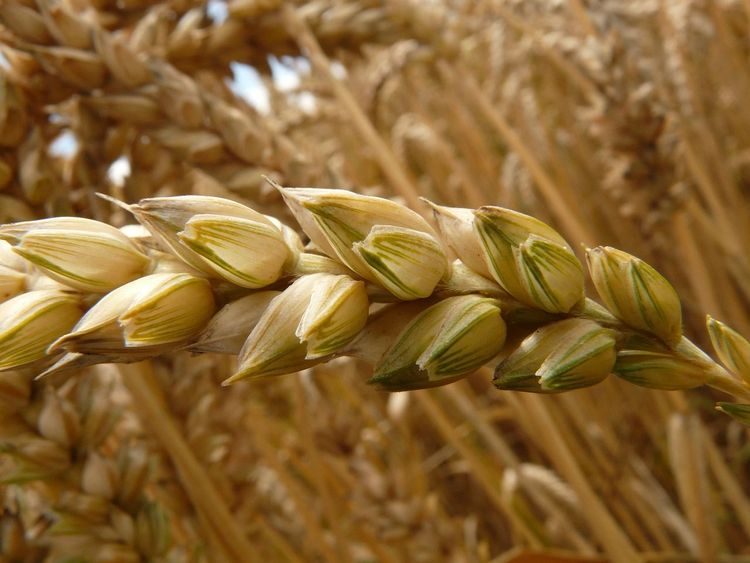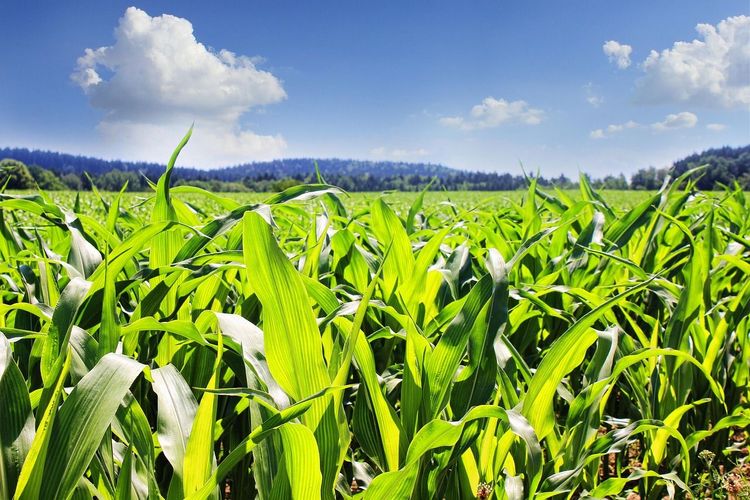CEO Sara Menker at VERGE 2021
In October, our CEO, Sara Menker, joined Jim Giles from GreenBiz at VERGE 2021: the Climate Tech event to discuss decision-making and planning with a less predictable climate. They walked through how Gro Intelligence is using AI, data, and human intelligence to help organizations see around the corner with more confidence. This interview has been slightly redacted for clarity.
Mapping Future Agricultural Supply Chains with a Changing Climate
Jim Giles: JG (Verge) - I have with me today Sara Menker, who is the founder and CEO of Gro Intelligence. You often hear these descriptions of what you're doing couched in terms of AI and predictive algorithms and data sets. I want to invite you to start by telling us a story about how people are using your platform. What are they actually doing?
Sara Menker : SM (Gro) - Let's start with a story around climate change, which is obviously a very big topic at COP26 coming up in Glasgow.
A lot of food companies and agricultural companies are thinking about how to repurpose their supply chains for the future:
- One, to be resilient to climate shocks that are occurring, and then
- Two, to say, "Are there shifts in products that we need to make as a result of climate change?"
When you are making those decisions, you need to understand our earth, the soils, the historical weather, and what helps particular crops grow. So let's take something like coffee.
Coffee grows predominantly in parts of South America - and parts of East Africa, Vietnam, etc. Well, a coffee tree takes over five years to grow. So when you're looking at climate change, one way that sort of people are using the platform today is to run particular types of models.
Land Suitability - Several food companies we work with work with our land suitability model. Our land suitability model essentially says what regions are most suitable for growing a particular crop. So you can feed it an ideal region that's made up of specific environmental variables, and then it maps against every part of the world. It generates scores for you to say these are the regions that are most suitable today.
Then under different CO2 scenarios - and under different climate change scenarios - how are those areas changing over time? Are the places that we're growing coffee today, for example, the most suitable 20 years from now? Or should we be looking at a change?
Artificial Intelligence, Interconnected Data, and Human Intelligence
JG (Verge) - I can see immediately how powerful that capability is, but it seems from your end to be this really daunting challenge. As anyone who's familiar at all with food and agriculture will know - the data involved is incredibly complex. There's many different commodities grown in different regions: the data is more and less reliable and there are language issues. Give us a sense of how much data you've had to assemble in order to allow this kind of work to happen and tell us a bit about how you managed to tackle that challenge.
SM (Gro) - My background was actually in energy before I started Gro. The way I describe it as a natural gas trader. I'd say, "I wake up every morning, and I'd want to know what every molecule of gas was doing across every pipeline around the world every single day. And the way that you do that is by collecting data around pipeline flows, or production, etc". And that sort of supply versus demand equation led me to pick a view on prices and be able to predict price. And, it was like, why wouldn't we do the same for agriculture and food if we want to fix our food systems?
We start with understanding it. What I didn't appreciate is that, unlike energy, it's not a single crop. It's 10s of 1000s of different products. Every single one of those products has different sets of biological rules that govern how it grows. And it's grown all over the world and you can have tiny farmers - like half acre farms - or 100,000 acre farms.
And so the information is significantly more fragmented than the energy industry. And you have huge barriers:
- One is format types of the format that the data comes in. Very little of our data that we ingest today comes in a form that works for a clean API data feed. It's PDF files, it's text, it's emails, it's just very random format, images, etc.
- The second is that agriculture is highly local. And so the best data about any country tends to come in a local language, not in English.
So there's this problem of fragmentation and complexity and breadth of what it means but also things like language and format etc.
For me, and for us, it started with let's understand what problem we're solving.
I didn't leave to start an AI company or data company. I left to solve a problem. And AI became an enabler. The problem becomes less daunting when you think of it that way because we start with human expertise that understands the vastness of the challenge. And we've been able to ingest and automate over 50,000 data sources into the platform. We are processing hundreds of trillions of data points every single day now.
It was just starting with a problem.
JG (Verge) - That 50,000 data sources. How many languages, for example, do you speak on the team?
SM (Gro) - I haven't done a recent count, but it would be at over 30 languages on the team.
I always say, "The artificial intelligence - the AI - is only as good as the HI, which is the human intelligence." And the human intelligence part ensures it's not garbage in, garbage out. That means that we have a very diverse team that spans the spectrum of domains that is important to solving this problem. We have climate scientists, plant biologists, market research analysts, former traders - the full gamut. We marry that industry knowledge with very deep technical expertise and engineering expertise, to say, how do you marry the two to scale that knowledge?
It means that we have an incredibly diverse team from a background standpoint - just pure academic and experience - but also nationalities. It's sort of like a little mini UN.
Transparency, Trust, and Confident Decision Making for Organizations
JG (Verge) - Let me play the role of the customer here for a minute. So I signed up to your service. I've used it to predict cotton yields or corn or wheat that's really critical to my business, and then I'm going to make some decisions. I'm going to make investments here and not somewhere else. I'm going to feel very nervous about that. What kind of guarantees can you give to your customers that actually the outputs or predictions you're making are likely to be accurate?
SM (Gro) - I'm so happy you asked that question. Because ultimately, it's about trust. It's about trust in the data. It's about trusting the methodology. It's about trust in your models. And trust can only be built with transparency.
We've taken a very atypical approach as a company than most AI companies, which is we open up all of our models to our customers. So we say here's the output. You can actually stress test, you can look at the back tests, and you can understand the methodology. We're giving you sort of the raw ingredients - both the recipe and the baked good - and you can sort of start at whatever area you want. And that means that you just build trust.
It's really hard because the places that we're sort of running forecasts for, could take one or two years for that data to update for people to validate whether your model was any good or not. And so really, it's transparency. And then we also provide confidence intervals every single day to get a sense of, you know, the range of confidence that we have in the output on that given day.
But it's a work in progress. It's something that we've spent a lot of time doing, which is just building trust.
What's Coming: Unpredictable Food Supplies and More Food Inflation
JG (Verge) - Right. So I want to finish off with a question for you. So you're sitting on all this data, you and your team presumably are looking at just out of your own interest. You've got this incredible crystal ball. Tell us what are you seeing in the days and in the decades to come?
SM (Gro) - I usually ask customers that: which is, if I gave you a crystal ball, what would you want to see? But you can reverse that question to me.
Right now, on a short term basis, what we're seeing is food inflation at record levels in many parts of the world, and it's not something that's going to go away anytime soon. So it's a little bit worrisome. It's basically driven both by supply and demand shocks continuously happening.
Supply shocks are much, much more around climate. And that leads me to longer term - in the decades to come. What we will see is a really significant lack of predictability in the food that we produce and in our supply chains than we ever had before. This ability that we are building is to see around the corner; planning is the most important it's ever been.
I'm not sure people quite get how complicated and how bad it can get in the next decade or two. We're not talking about 50 years from now where it seems so abstract.
Working Together on Food Availability in a Changing Climate
JG (Verge) - I just wanted to go a little bit deeper on that because that's such a critical issue. We know that things climate wise are going to become less predictable. Are there particular crops that you're concerned about in terms of our inability to be certain what the yields will look like?
SM (Gro) - No, it's not crop specific because crops will just shift to other regions. It's specific countries' resiliency including the ability to make those changes. For a country and for the world, it's whether these shifts occur in a way that is orderly enough to then facilitate trade flows that look different than the trade flows we have in place today.
It's really whether the world can continue to work together. As opposed to being more insular, which is unfortunately the path that we've been taking.
 Blog
BlogGain Actionable Insight Into Climate Impacts With The Gro Climate Ensemble
 Insight
InsightGro’s 2024 Watchlist: 3 Forces Shaping Global Climate Risk in the Year Ahead
 Insight
InsightImproved Conditions Boost Prospects for India’s Upcoming Wheat Harvest
 Blog
Blog

 Search
Search